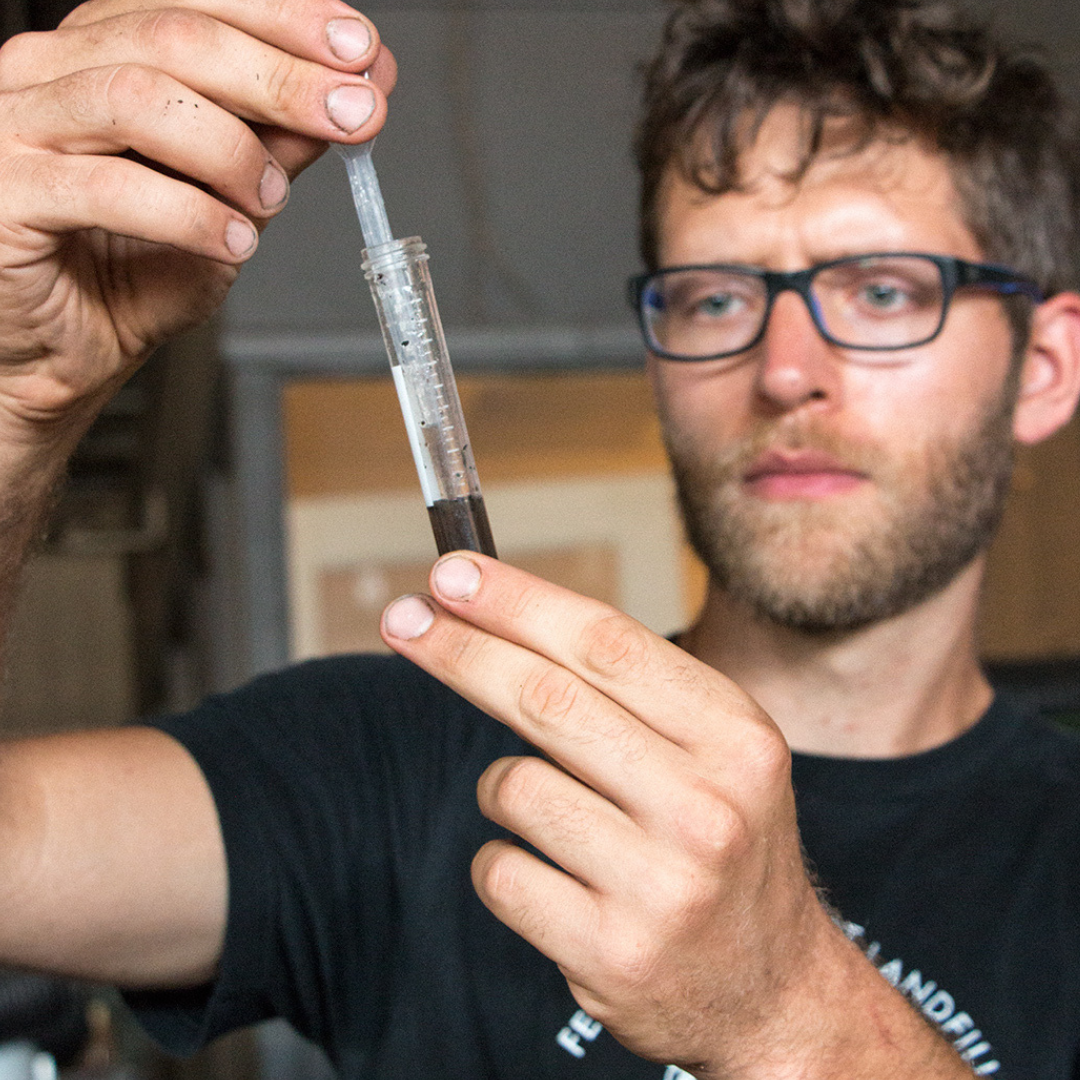
Look Closely At Compost
Nathan Rutz, our Director of Soil, is brimming with know-how when it comes to questions like, how is compost made? He is intimately aware of what goes into the making of organic growing mediums, thanks to his studies with masters like Karl Hammer of Vermont Compost Company, and daily hands-on work in the craft.

In this season of renewal, Nathan appreciates the mysteries of composting, such as the seemingly magical appearance of microorganisms even as the pile reaches 131° Fahrenheit. He explains how colonies of bacteria and fungi tuck in to a feast of food waste, transformed into compost through the reactive qualities of air, moisture, heat (and some elbow grease to turn the pile) and time.
With Rust Belt Riders, Tilth Soil re-purposes food waste, otherwise destined for landfill, into nutrient-rich organic compost they call Wendell. This compost gets worked into a "soilless mix" in the case of Tilth's Grow, a general purpose garden mix - a living soil blend.
Nathan begins explaining a "soilless mix" by clarifying that compost is not soil. Soil comprises layers of sand, silt, clay, and organic matter, which may include finished compost. Scientists categorize soil layers based on composition, with the top "O" layer housing leaf litter and decomposers like earthworms. Below lies the "A" layer, rich in mineral and organic matter, followed by layers of weathered parent material and bedrock.
In a forest, the feast and resulting compost happens naturally in situ, or where the leaves fall. We mere mortals follow a different method, relying on a process of mixing materials like nitrogen-rich food waste, carbon-rich leaves, and wood chips.
"We are creating the conditions for an explosion of microbial life, and that explosion does the decomposition," Nathan explains. "I’m a Christian, I believe in impossible things, so for me, one of the great mysteries of life [is] we have thermophilic bacteria floating around. They thrive above 131° Fahrenheit and multiply enough once they get to that temperature. What are they doing most of the time?”

Assembling the nitrogen and carbon in the correct ratio and turning the compost pile five times when it reaches 131° Fahrenheit kills weed seeds and pathogens like eColi (making Tilth Soil products National Organic Program-compliant). During that time, microbes consume and transform nutrient-rich waste like apple cores, banana peels, and coffee grounds into compost, eventually forming a "necromass."
“At the end of the process, the stuff is made delicious through the corpses of microbes (necromass).”
“The fact that this process can be done anywhere on the planet with any trash around and the result is clean and safe and it’s free strikes me as providential” reflects Nathan.
This is just the beginning of compost. After cooling, fungi set up shop and eat the lignin, or woody parts, of the compost pile.
Compost helps the planet by preventing the release of methane, a potent greenhouse gas, which is what is created when food scraps go to landfill. Another benefit to compost is the improvement of the photosynthetic capacity of plants. Healthy soil comes from plants providing more nutrients and attracting microbial partners.
Tilth Soil makes potting soils -- technically classified as soilless medium (remember, soil is a sand, silt and clay mix). Grow is compost mixed with organic materials and amendments. While we acknowledge the sustainability concerns associated with transporting different amendments long distances to Cleveland. However, we eagerly anticipate advancements in soil science, such as those pursued by experts like Dr. John Biernbaum of Michigan State University, who may one day develop compost into a comprehensive growing medium.

1 comment
Such cool yet scientific information!! We need to get you in the mainstream